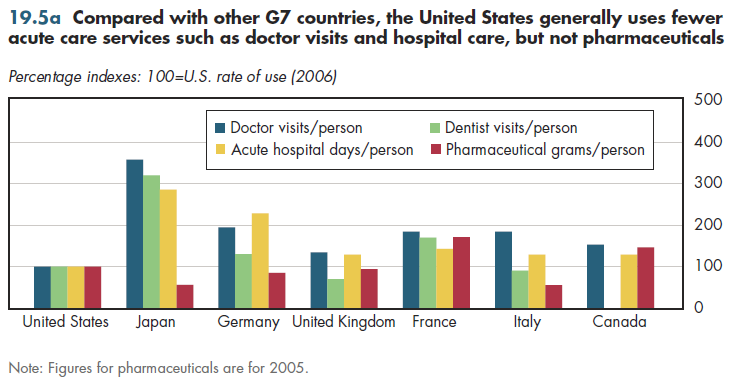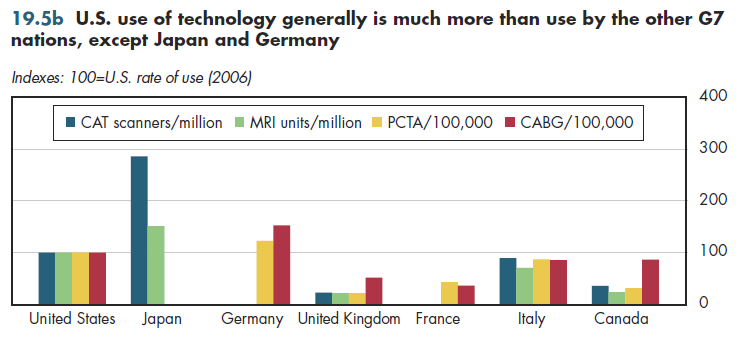Increased U.S. health care spending generally does not appear to be the result of more health care services use compared with use in other industrialized nations. The annual number of physician visits, for example, is as much as 100 to 200 percent higher in other G7 countries (figure 19.5a). Similarly, each one of these nations exceeds the United States in acute hospital days per person.

Pharmaceutical use, measured in grams per capita, is higher in the United States compared with other G7 countries (except France and Canada). On average, the differences are not large. Because pharmaceuticals account for only one-eighth of all health spending, these differences cannot explain per capita spending differences measured in double-digit percentages.
U.S. use of diagnostic technology (such as CAT scanners or MRI machines) and advanced medical procedures is higher than in other G7 nations, except in Germany and Japan. Examples of advanced medical procedures include percutaneous transluminal coronary angioplasty (PTCA), used to clean out clogged arteries, and coronary artery bypass graft (CABG) surgery, which also generally is used more in the United States than elsewhere (figure 19.5b). However, the aggregate spending on such procedures is not sufficient to account for spending differences as large as currently exist.

Immunization rates for children (for example, for measles, or for diphtheria/pertussis/tetanus [DPT]) and for the elderly (flu shots) generally are the same as rates in the rest of the G7 (figure 19.5c).

Health professionals in the United States generally are paid much more than their counterparts are elsewhere in the G7 (refer to figure 11.4a). Because labor costs account for such a large part of the health sector, it would be difficult to avoid higher U.S. spending levels unless the use of services by Americans was drastically lower than elsewhere. Many experts believe that the United States also pays the highest prices for medical equipment, in part because it tends to be an early adopter of new technologies. Higher introductory prices typically are paid by early adopters.
Download PowerPoint versions of all figures.
- Organisation for Economic Co-operation and Development.












